In the fall of 2018, Spencer Topel presented his first talk at YQI on his artistic practice, uncertain of where it would lead. After a few minutes discussing waves, signals, frequency, resonance, and noise, the sound artist and the quantum physicists discovered they spoke a similar language...
We continue exploring art as a medium to increase our understanding and discourse of quantum physics by welcoming Spencer Topel; a musician and artist working with sound installations, and performances.
For this residence, we are proposing an ambitious project: a live concert where Spencer, and two graduate students, Kyle Serniak and Luke Burkjart, will “play” sound generated by the operation of quantum computers prototypes in the Yale Quantum Institute laboratories cooled to nearly absolute zero, as if they were instruments in an orchestra. This live performance will be the first of its kind, attracting the interest of scientists in the quantum community for the technical challenge, and of the public for the novel soundscape that will be produced.
While most of us are still trying to make sense of quantum computing the folks at the Yale Quantum Institute - one of the very finest of its kind - are making are universe sing.
“Being an artist working with scientists, the greatest satisfaction for me comes from learning state-of-the-art concepts, and then finding ways to translate these concepts into meaningful experiences for audiences and visitors through immersive installations, music, and design.
Since the fall of 2018 I have worked most closely with students in the laboratories of Robert Schoelkopf and Michel Devoret. Our bi-weekly interactions provide unique perspectives on several topics of importance to my practice: translation of signals to the mediums of sound and light, engineering and design, and the translation of fundamental scientific phenomena into immersive installations.
Upon arriving at the Yale Quantum Institute, my first inclination was to assess the artistic potential of various quantum experimental systems. To my surprise the measurements conducted on transmon qubits and other superconducting circuits strongly resemble musical signals generated from canonical sound synthesis techniques. When I and two Yale PhD students, Kyle Serniak and Luke Burkhart, began to experiment with the sonification of these signals directly, the sounds were immediately relatable and musical signals.
In June, to mark the end of my residency, and part of the prestigious Festival of Arts and Ideas of New Haven, we will attempt to perform on two of the circuits running within dilution refrigerators in a live performance, by remotely pulling data, transforming timescales, and sonifying it as a continuous musical experience. Both Kyle and Luke will perform along-side me as fellow musicians to create the first ensemble of quantum superconducting devices. I am also grateful Florian Carle offered me the opportunity to join YQI for an artistic residency and for his work carrying this project forward as producer of the performance at Firehouse 12.
In many respects, these experiences of working with the fundamental technologies being explored inside quantum systems echo experimentation with new musical processes from more than a century ago, when Leon Theremin invented instruments and transducers exploiting principles of electromagnetism and recently- invented radio proximity sensors. The most famous of these instruments, the ætherphone or theremin, became the first contactless musical instrument and is still fabricated and performed today.
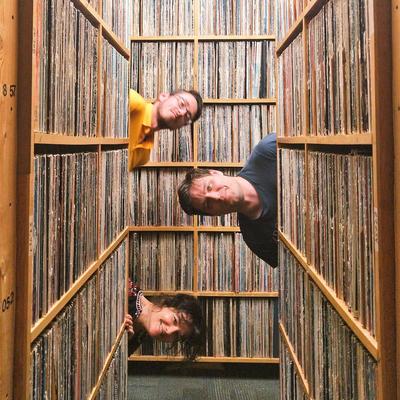
Looking beyond the work accomplished throughout the academic year 18-19, I can say with certainty that my artistic and design practice is significantly enriched by my time developing new sound, music, and art with scientists at YQI. Furthermore, based on our preliminary experimentation this past year, it is clear that we are just beginning to scratch the surface of the fertile and inspiring domain of music and art synthesized through quantum engineering.”
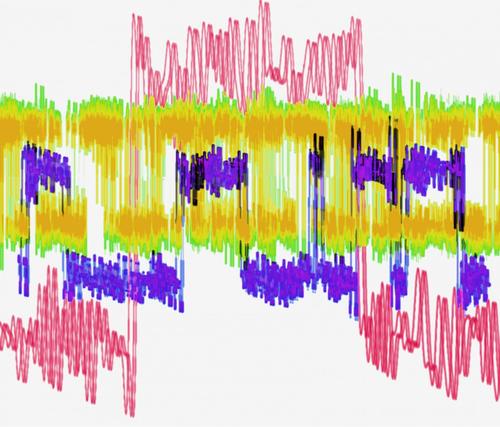
The International of Arts and Ideas Festival invited Spencer to talk about his work at YQI on the panel Data-Driven Sounds, part of the Idea lecture series on June 12, 2019.
Together musicians Kaki King, Spencer Topel, and Jay Alan Zimmerman shared how they are using data not just to make sounds but to see and experience music. Kaki King’s 2020 Arts & Ideas commissioned Data Not Found explores how big data and personal data have come to affect our lives, and what those effects look and sound like, Yale Quantum Institute Artist-in-Residence Spencer Topel breaks down the sounds of a single moving electron, and composer Jay Alan Zimmerman discusses his collaboration with Google and their music visualization tools.

To mark the end of the residency, Spencer Topel and the creative team behind Quantum Sound presented the first-ever music created from the measurements of the dynamics inside superconducting quantum devices, the precursors to quantum computers on June 14, 2019.
In the intimate space of New Haven’s premiere recording studio Firehouse 12, quantum systems performed by Spencer, Kyle, and Luke, were played live throughout two one-hour sets. Together they explored these unique scientific devices as musical instruments in this groundbreaking musical experience. The 35-minute musical set was preceded by a 15-minute introduction to quantum physics giving the audience the key concept to better understand the performance, and followed by a 10-minute discussion with the artists.
During the performance, Kyle and Luke used data acquired (some pre-recorded, some acquired live during the show) from the superconductive devices in the Yale Quantum Institute laboratories in Becton Center) and turned into a signal and processed and performed live. Spencer, using pre-recorded data, processed and performed the data and mix the three audio signals like a conductor to create a coherent composition. The audio signal was then through an EMT plate for reverberation and sent to Firehouse speakers and recorded for the release of an album. The 10 pm concert was broadcasted live on WPKN 89.5 FM to allow everyone to experience the performance.
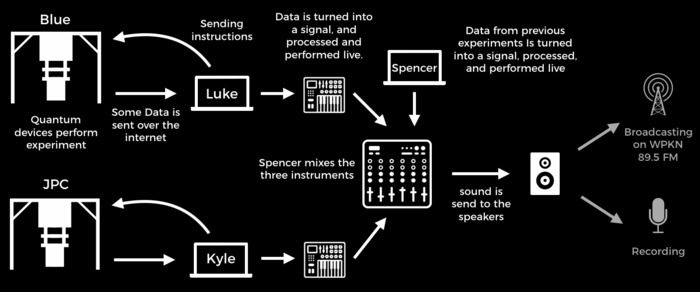
The range of sounds produce by the superconductive instruments is remarkable. It includes moments of intense noise, intercut by melodies in turns diatonic, ominous, or almost imperceptible. The audience, safely protected inside the wooden cocoon of Firehouse 12, was transported in an eerie and desolate winter landscape, populated by winds blowing through a mountain pass and looming storms. At times there’s a comforting flutter bringing warmth to the listener, which Topel calls a “wobble,” created by the quantum “noise” that exists within the signal.
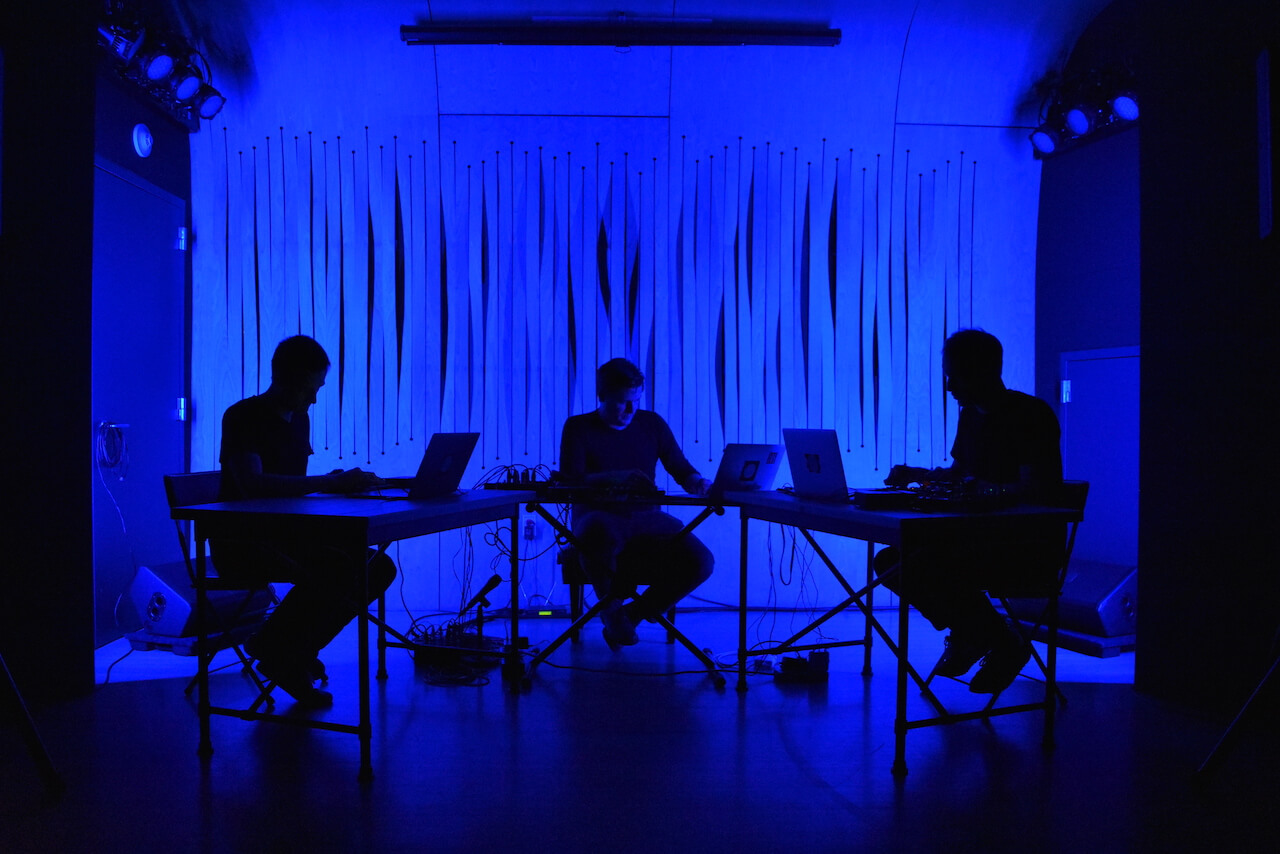
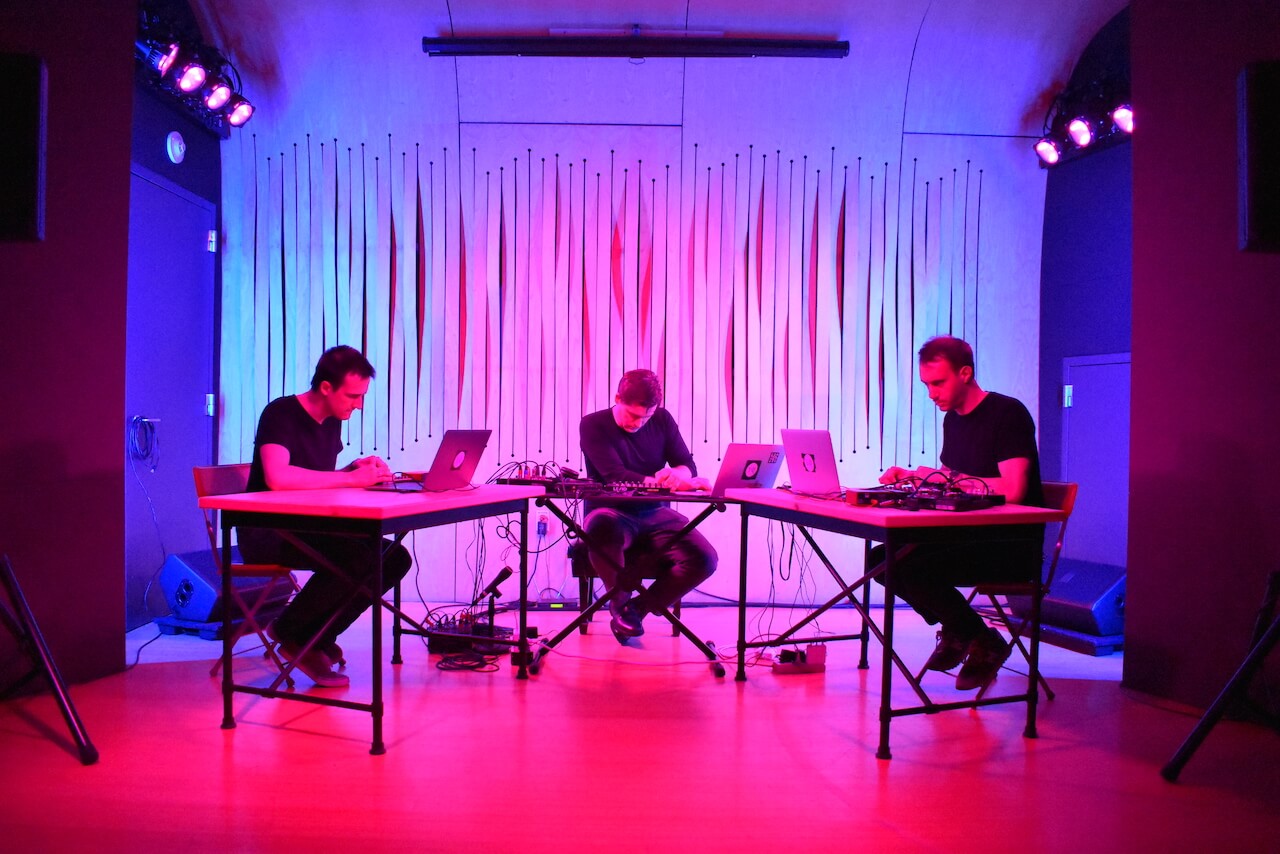
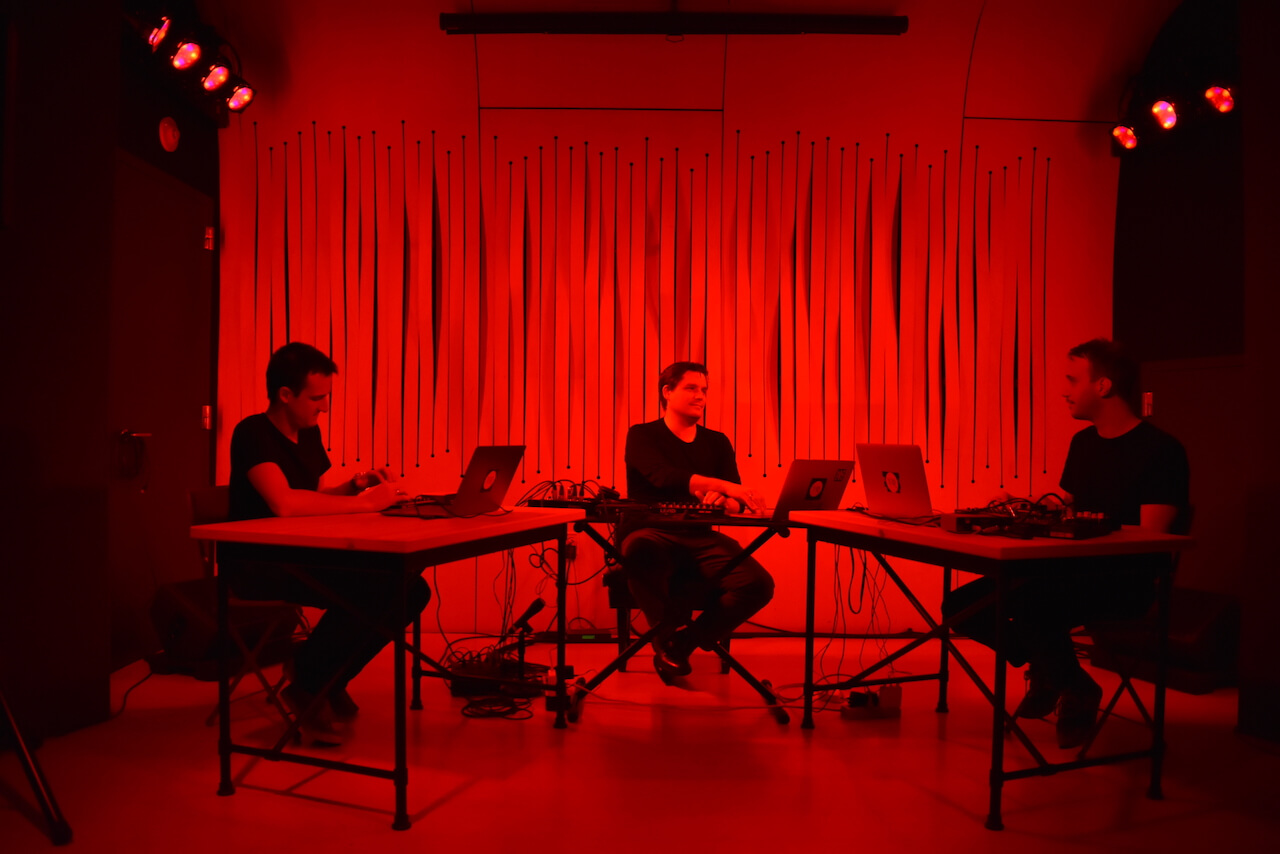
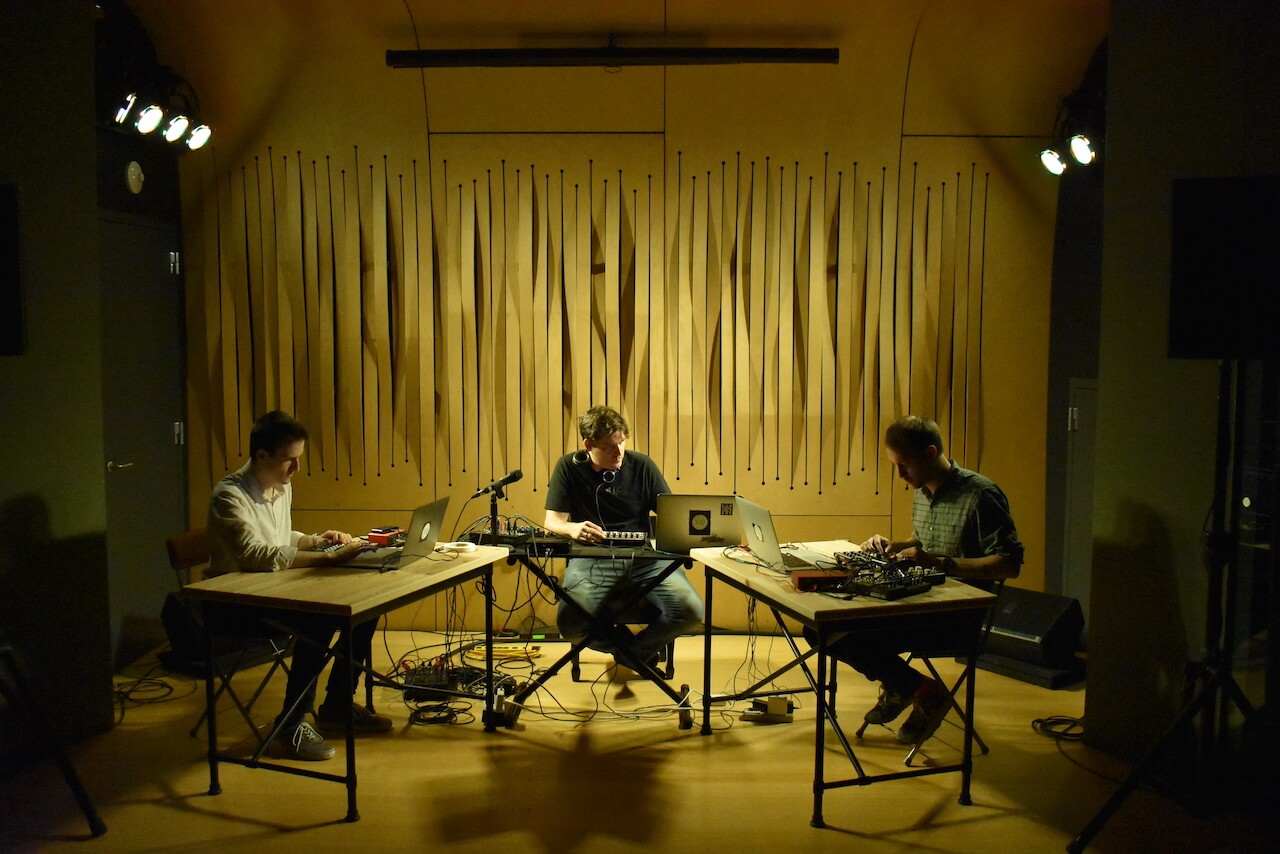
Lighting played an important role in the performance. Composed of solid and intense colors (mostly blue and red, conventionally representing the ground and excited states of the qubits in quantum physics), the light evolved as the performance (and system) transitioned from a calm movement (blue ground state), to a fast paced one (red excited state). The obvious and intentional lack of green or any natural lighting evoked the complete isolation of the superconducting qubits deep inside their dilution fridge at almost absolute zero degrees.
